Key takeaways:
- Butterfly conservation supports entire ecosystems and reflects environmental health, prompting the need for sustainable practices.
- Mentoring youth fosters responsibility, critical thinking, and advocacy for environmental conservation.
- Effective youth mentorship involves building trust, tailoring approaches to individual interests, and setting achievable goals to enhance confidence.
- Challenges in mentoring include addressing fears of failure, navigating diverse backgrounds, and maintaining engagement amidst varying commitment levels.
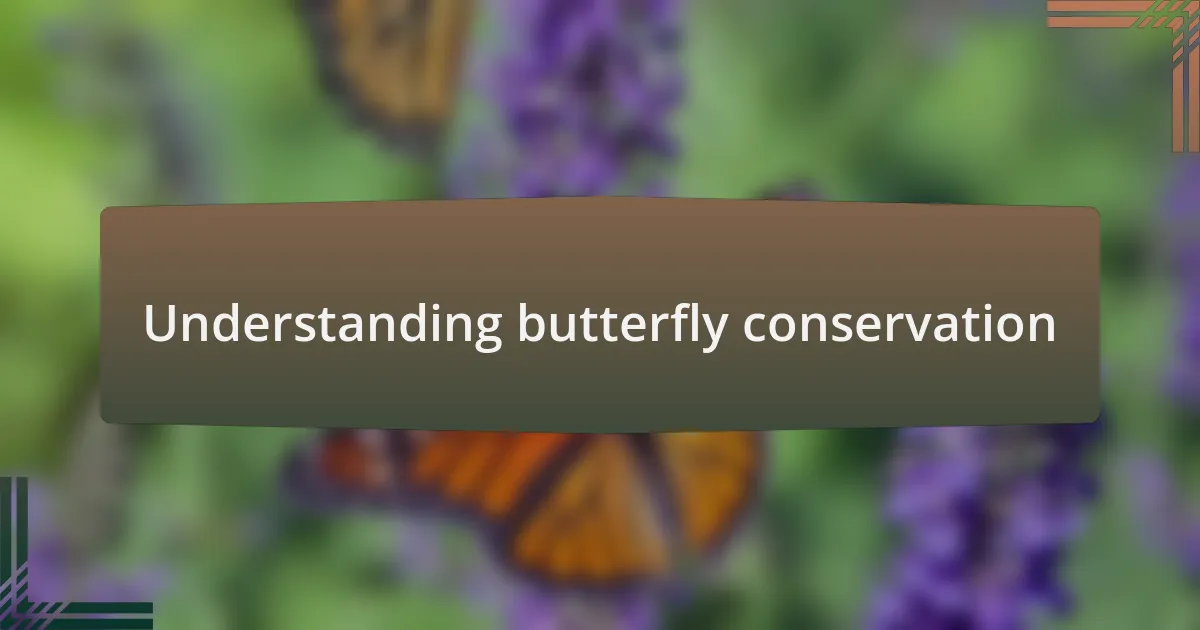
Understanding butterfly conservation
Butterfly conservation is more than just protecting these beautiful creatures; it’s about preserving entire ecosystems. When I first stepped into a butterfly garden, I was taken aback by the delicate balance of life surrounding me. This experience made me realize how crucial it is to maintain habitats that support not just butterflies, but a myriad of other species as well.
One fascinating aspect of butterfly conservation is the role these insects play as indicators of environmental health. Have you ever thought about how butterflies reflect the state of our ecosystem? When I observed a decline in their numbers during a local project, it prompted a deeper dive into understanding pollution and habitat loss in our community. This connection has driven me to advocate for more sustainable practices in my everyday life.
Alongside scientific insights, there’s an emotional connection we can develop with butterflies. Each fluttering visit can spark joy and hope, reminding us how interconnected our lives are with nature. I often find myself wondering if future generations will know the same thrill I felt when a butterfly landed on my shoulder. This personal engagement fuels my passion for mentoring others—especially youth—about the importance of these vital insects.
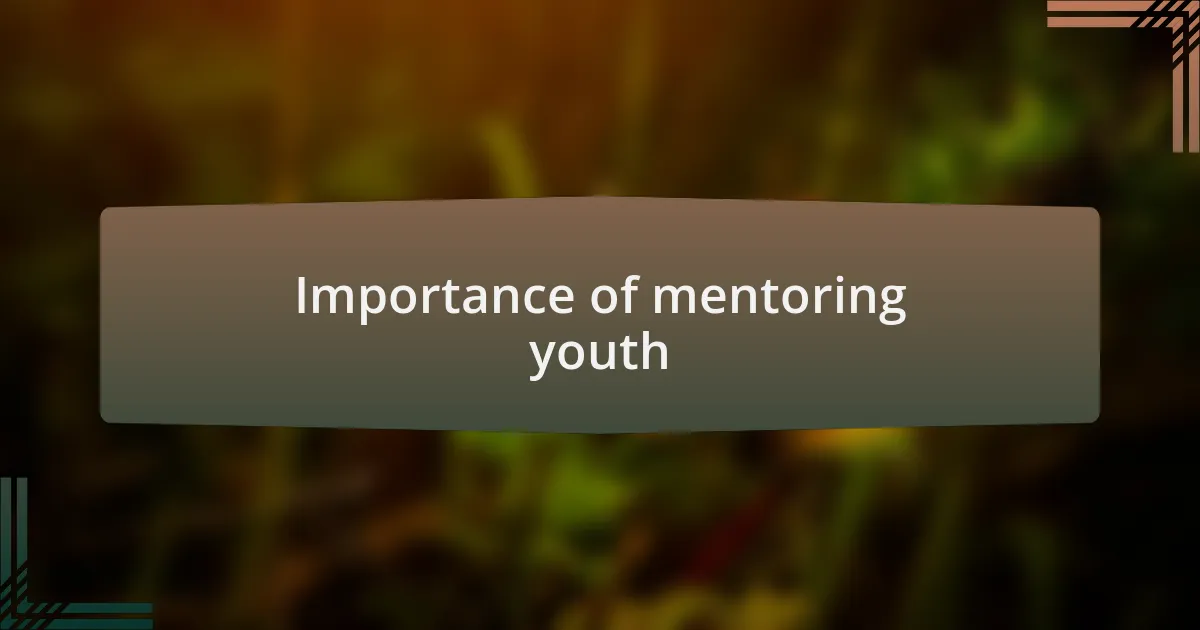
Importance of mentoring youth
Mentoring youth is crucial because it instills a sense of responsibility towards the environment. I remember sitting down with a group of young students, sharing stories about the life cycle of butterflies. Their eyes lit up as they learned how these delicate creatures evolve, and I could see their curiosity blossoming. Have you ever witnessed a child’s wonder when they connect the dots between nature and their own lives? It’s moments like these that highlight the significance of guiding the next generation to appreciate and protect our ecosystems.
Additionally, mentoring offers an opportunity to encourage critical thinking and active citizenship. I once had a mentee who volunteered for a local conservation project after our discussions about the threats to butterfly habitats. Seeing that spark of initiative was incredibly rewarding. It made me reflect on how vital it is for youth to not only learn but to take action. Isn’t it inspiring to think about the impact one engaged individual can have on a community?
Moreover, fostering relationships through mentorship creates lasting bonds that empower youth to lead. I often find that these connections help young people develop leadership skills and confidence. One of my mentees ended up organizing a community awareness campaign around butterfly conservation. That experience transformed their understanding of advocacy, showing me just how significant mentorship can be in shaping future environmental stewards. Don’t you think it is our responsibility to nurture such potential?
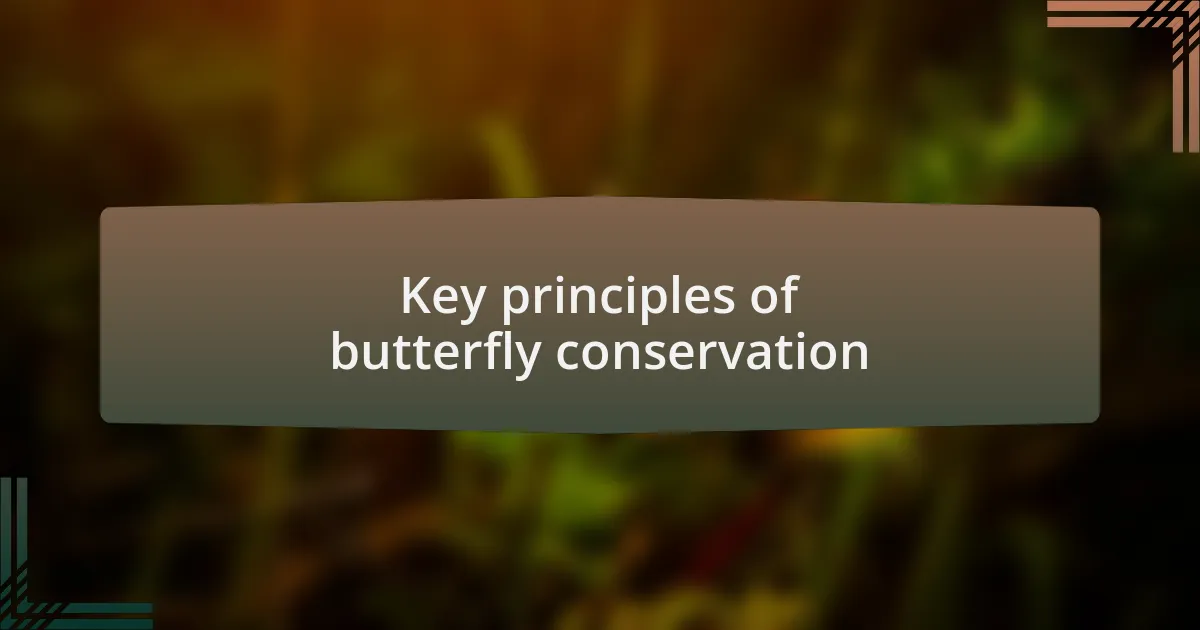
Key principles of butterfly conservation
The key principles of butterfly conservation revolve around habitat preservation, species awareness, and active involvement. Personally, I believe that protecting butterfly habitats is fundamental; without suitable environments, these enchanting insects cannot thrive. Have you ever strolled through a garden and noticed the vibrant colors fluttering by? That joy shouldn’t just be a fleeting moment—it’s vital we create spaces where butterflies can flourish.
Another critical aspect is understanding the unique needs of different butterfly species. I once participated in a workshop focusing on native plants that attract local butterflies. Each flower has its own charm and serves a purpose, like providing food or shelter during various life stages. Isn’t it fascinating how interconnected our ecosystems are? When we educate ourselves about these relationships, we become better stewards of the environment.
Moreover, engaging communities in conservation efforts can have a profound impact. During a recent butterfly count event, I experienced firsthand the excitement of families coming together to observe and record butterfly sightings. The collective energy was palpable, reinforcing the idea that conservation is not just a solitary endeavor. Isn’t it uplifting to witness how these small gatherings can ignite a passion for nature in so many? By fostering community spirit, we can ensure that these delicate creatures continue to grace our lives for generations to come.

Engaging youth in conservation activities
Engaging youth in conservation activities can be a transformative experience. I remember when I took a group of teenagers to a local butterfly garden for the first time. Their eyes lit up as they spotted their first Monarch flitting from flower to flower. It reminded me how sparking curiosity in young hearts can lead to a lifelong appreciation for nature.
One effective approach is to incorporate hands-on activities that captivate and inspire. Organizing a butterfly release event allowed participants to witness the beauty of metamorphosis firsthand. The excitement in their voices as the butterflies took to the sky was infectious. It made me realize how impactful these moments can be in fostering a sense of responsibility towards the environment.
Additionally, mentorship plays a crucial role in encouraging youth involvement. I once guided a youth group project focused on creating butterfly habitats in their schoolyard. Seeing their pride in cultivating a space for these creatures was truly uplifting. This experience reinforced my belief that when young people take ownership of a project, they not only learn; they also develop a deeper connection to the world around them. How can we inspire this generation to become the passionate conservationists of tomorrow? By giving them the tools, knowledge, and encouragement they need.
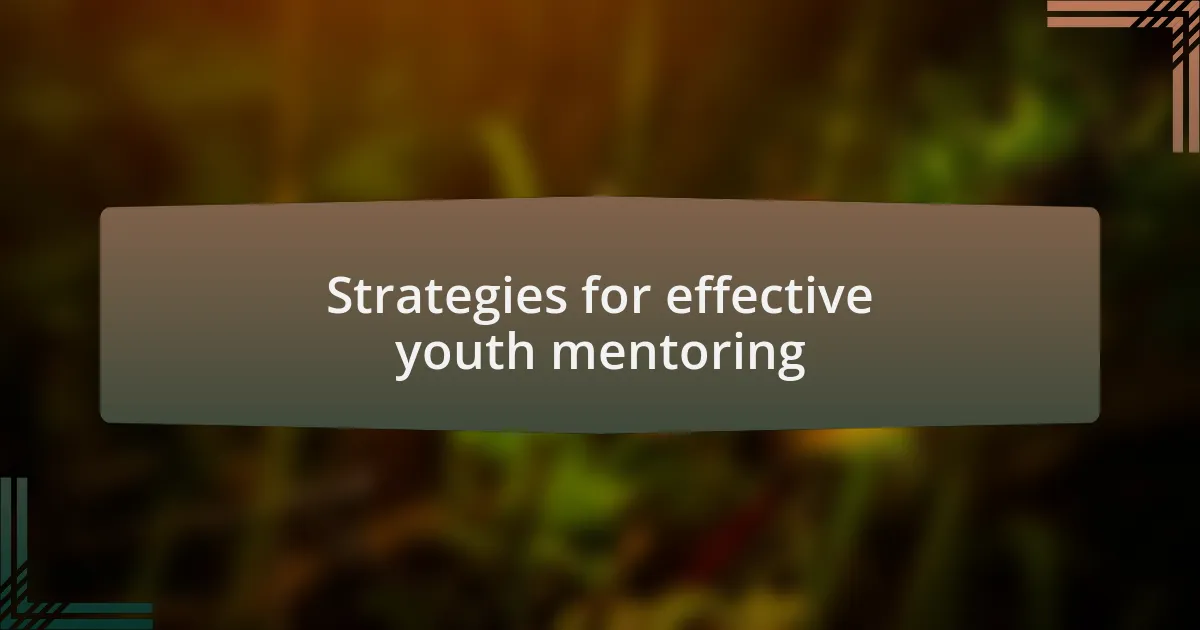
Strategies for effective youth mentoring
One effective strategy for mentoring youth is to build genuine relationships based on trust and mutual respect. I recall spending time with a young girl named Sarah who was initially hesitant to engage with nature. By sharing stories of my own childhood explorations and the thrill of discovery, I helped her feel comfortable in discussing her fears and interests. This connection not only opened her up to new experiences but also encouraged her to express her thoughts and questions about the environment.
Another important strategy is to tailor your mentoring approach to the specific interests and strengths of the young people you work with. For instance, during a weekend workshop, I noticed that several students were fascinated by art. So, we shifted our focus to creating butterfly-themed art projects, and the enthusiasm was overwhelming. It was remarkable to witness how integrating their passions with conservation efforts led to innovative ideas, like designing informative posters about butterfly habitats. How often do we overlook the unique strengths of our mentees in favor of a one-size-fits-all approach?
Finally, setting achievable goals can significantly boost a young person’s confidence and investment in conservation projects. In my experience, we once set a goal to create a butterfly-friendly garden within a month. Breaking this larger objective into smaller, manageable tasks allowed the group to celebrate each step along the way. The joy in their faces when we planted the last flower was unforgettable. This process not only built teamwork but also ingrained a sense of accomplishment, showing them that their contributions have a real impact.
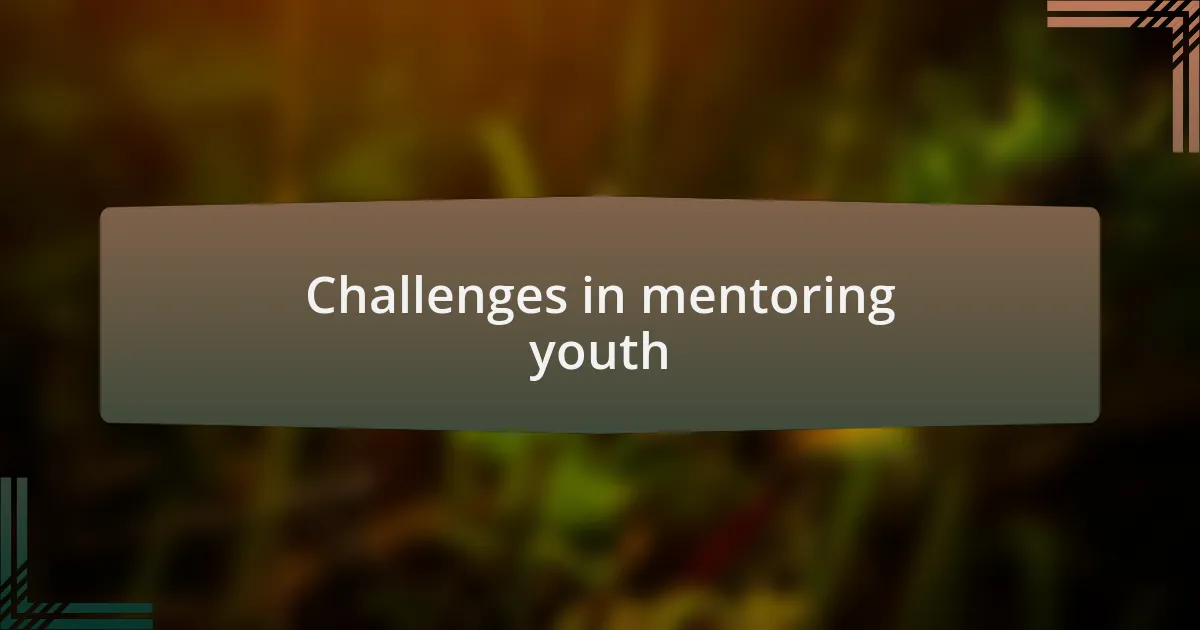
Challenges in mentoring youth
Mentoring youth certainly comes with its share of challenges. I remember a moment when one of my mentees, Jake, struggled with the fear of failure while attempting a butterfly observation project. It can be disheartening to see a young person so passionate yet held back by their insecurities. How do we help them push past these feelings? I found that patiently encouraging them and emphasizing that mistakes are part of the learning process can make a world of difference.
Another challenge I’ve faced is navigating the diverse backgrounds and experiences of the youth I mentor. Sometimes, cultural differences create barriers in communication and understanding. For example, in a recent conservation workshop, I realized that some participants had never heard of conservation efforts before. This made it difficult to connect on shared goals. I focused on finding common ground, like our appreciation for nature, which helped bridge that gap and opened up a richer dialogue.
Finally, the commitment levels of young people can vary greatly. I once worked with a group that was eager at first, yet their enthusiasm waned as other commitments took precedence. It’s tough to keep that momentum going, isn’t it? I learned that checking in regularly and making our meetings fun and engaging can rekindle that spark, creating a balance that holds their attention while nurturing their passions.